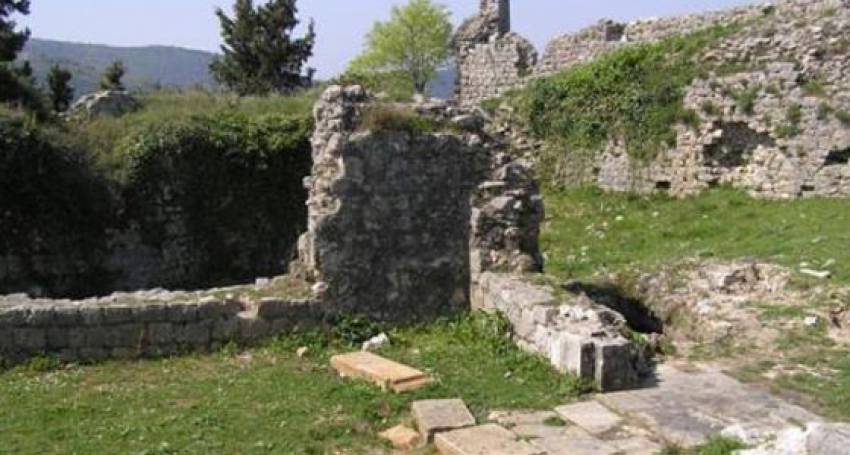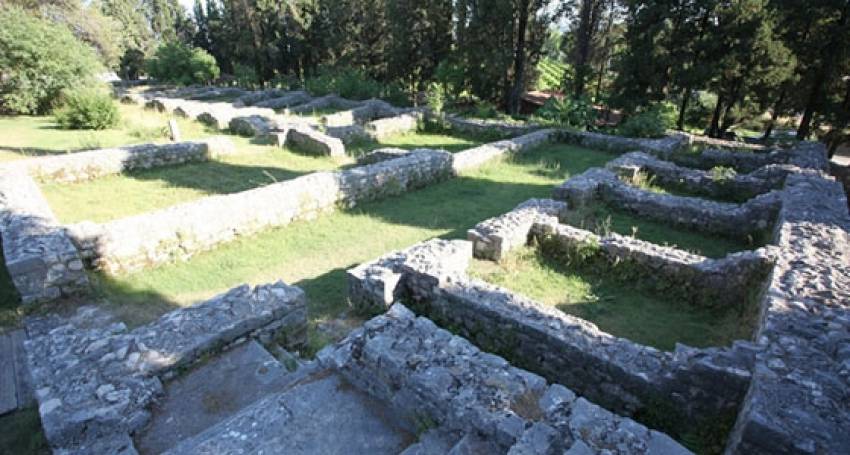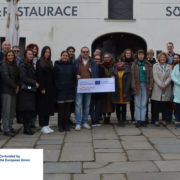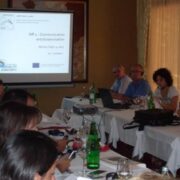- Home
- Gabela

March 4, 2022
Gabela
Rich archaeological find on the Neretva riverbank
Gabela is a rich archeological find on the right bank of the Neretva, situated 5 km south to Capljina. Gabela is a national monument of Bosnia and Herzegovina. The remains of the brick house and the ruins of the manors in the suborb suggest that Gabela had a strategic position and was peopled even in Roman times. Of many medieval buildings whose remains have been found, the most significant are the old fortifications and the stone plate with the winged lion, the symbol of the Venetian Republic.
In the 12th century Gabela is mentioned as the settlement Luka in the chronicle by the priest Dukljanin. Later, Gabela was called Drijev (Driva) which meant in old Slavic languages a ferry-boat used to transport people and goods over the river. Between 15th and 18th century, Gabela was a great trade center and an important strategic fort on Venetian-Turkish border.
In the documents from Dubrovnik’s archives it is mentioned under the Latin names Mercantum Narenti, Forum Narent Narentum. The name Gabella Narente( gabella, in Venetian customs) shows that the most important role of Gabela was to be a trade center through which there flew the goods from Dubrovnik to Venetia: salt, oil, wine, fabrics, glass, weapons, luxury goods and from the inland: wood, meat, cereal, leather, honey and cheese. At the time the square in Gabele was known as the place for buying the slaves.
Different political and economic interests fought for the dominace on rule over Gamela. The Turks invaded Gabela in 1477. Gabela was occupaied by the Venetians in 1694, after several failures. By the agreement in Pozarevac 1718, Gabela was under the rule of the Turks again, this time without power from before. The Venetians used mines to destroy all important buildings. During their time, the Austro-Hungarians built a railway from Sarajevo to Dubrovnik and Metkovic, while the railway junction was in Gabela. Gabela got world’s attention at the end of the last century when Roberto Salinas Price, the Mexican scientist while studying Iliad and Odyssey made hypothesis based on geographical facts that the war of Troy took place in the valley of Neretva and that Gabela was Ilios , the capital of Troy.
Gabela is a rich archeological find on the right bank of the Neretva, situated 5 km south to Capljina. Gabela is a national monument of Bosnia and Herzegovina. The remains of the brick house and the ruins of the manors in the suborb suggest that Gabela had a strategic position and was peopled even in Roman times. Of many medieval buildings whose remains have been found, the most significant are the old fortifications and the stone plate with the winged lion, the symbol of the Venetian Republic.
In the 12th century Gabela is mentioned as the settlement Luka in the chronicle by the priest Dukljanin. Later, Gabela was called Drijev (Driva) which meant in old Slavic languages a ferry-boat used to transport people and goods over the river. Between 15th and 18th century, Gabela was a great trade center and an important strategic fort on Venetian-Turkish border.
In the documents from Dubrovnik’s archives it is mentioned under the Latin names Mercantum Narenti, Forum Narent Narentum. The name Gabella Narente( gabella, in Venetian customs) shows that the most important role of Gabela was to be a trade center through which there flew the goods from Dubrovnik to Venetia: salt, oil, wine, fabrics, glass, weapons, luxury goods and from the inland: wood, meat, cereal, leather, honey and cheese. At the time the square in Gabele was known as the place for buying the slaves.
Different political and economic interests fought for the dominace on rule over Gamela. The Turks invaded Gabela in 1477. Gabela was occupaied by the Venetians in 1694, after several failures. By the agreement in Pozarevac 1718, Gabela was under the rule of the Turks again, this time without power from before. The Venetians used mines to destroy all important buildings. During their time, the Austro-Hungarians built a railway from Sarajevo to Dubrovnik and Metkovic, while the railway junction was in Gabela. Gabela got world’s attention at the end of the last century when Roberto Salinas Price, the Mexican scientist while studying Iliad and Odyssey made hypothesis based on geographical facts that the war of Troy took place in the valley of Neretva and that Gabela was Ilios , the capital of Troy.

 Hotel
Hotel Pansion
Pansion Travel agencies
Travel agencies Museums
Museums Tourist info center
Tourist info center Motel
Motel Restaurants
Restaurants Monuments
Monuments Transport
Transport Natural and attractions
Natural and attractions




